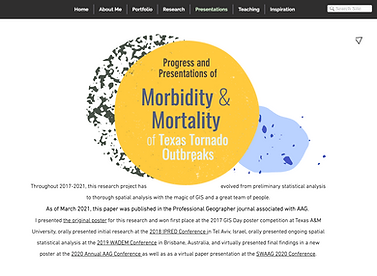
Inspiration etc.
Here are even more cartography and earth related books, tools, websites, articles, and visualizations. Please reach out to me if you have suggestions or comments!
Photo courtesy of Wix.com
Cartography Spotlight: Cynthia Brewer
Cartographer, Professor, and Head of Department at Penn State University, Cynthia Brewer is a renowned cartographer and author whose work has inspired me throughout my studies. Her book Designing Better Maps: A Guide for GIS Users and web tool ColorBrewer: Color Advice for Cartography are two fantastic and aesthetic resources I often reference throughout the map-making process for the fundamentals of good cartography.
In addition to the others on this webpage, the number of cool books I have piling up is greater than the time I've devoted to reading them
thoroughly. As a college student, some of these have been for classes, like Making Maps, whereas others inspire new perspectives and
make for a fun read, like On the Map, Geographic Thought, and
How to Lie with Maps.



Click each book for a link to where you can find it!
September 2018
A renowned cartographer, Gretchen Peterson is the author of 4 books (all of which I shamelessly own). Cartographer's Toolkit is generally tucked in my backpack with me when I'm heading to the computer lab to work on different maps; the color schemes and font pairing suggestions never fail me. Her blog is also easily my favorite cartography blog of all time, and is featured on my own website here. Needless to say, I find a lot of inspiration and answers throughout the pages of these books and on her website; GIS Cartography: A Guide to Effective Map Design was actually my first GIS book I ever owned!
I came across this book in the sale section of the Smithsonian National Museum of Natural History gift store. Its essentially a small book of remote sensing images organized by Earth's abstract patterns, like ripples, circles, swirls, cracks, grids, etc. This book encourages us to look at our planet in a new way, and consider how everything is shaped by an array of geological forces.
Although the continents appear to us not to move, they do, ceaselessly. The interactions among the moving plates and the continents they carry account for nearly all of the Earth's surface features. 'Solid as a rock' and 'rock-ribbed' define stability, yet over deep time, rock can flow like toothpaste.
Above is a selection from the first page of Four Revolutions. This quote is the kind of perspective that jazzes me up to learn about the earth and geologic process; I love thinking about how dynamic and evolving everything is on many different scales at once. The image above this text also contains a quote that inspires me just as much. It is incredible to think how much water alone has shaped our planet!
I got this book after I took an Intro to Geology course and fell in love with the theorists. This book discusses the evolving views of varying geologists and earth scientists on theories like uniformitarianism, catastrophism, and continental drift- some fun fundamentals to learn about! The book has 4 sections: Deep Time, Continental Drift & Plate Tectonics, Meteorite Impact, and Global Warming.
WEBSITE PROGRESS

Check out what some of the old pages of the site look like! This is the old Research and old Presentation pages. I have run this website for over three years now - designing and re-designing it is my favorite thing to do!


Check it out:

As depicted by the white arrow on the map to the right, here in the image you are standing at the place in the library where I noticed I was sandwiched between two vastly different time periods of geography.
The orange-yellow color
contrasts the deep blue, a color-coding system I chose to depict the contrast between genres, which in in this case are: Technological Spatial Sciences versus the History of Geography section.



This is a picture of my notes while thinking through how I was going to plan out the subgenres. There are more written here than I actually used; I felt that too many genres/too much text would be inefficient to the overall visual design.

As described in the caption above, the color-coding theme I chose to go with is a function of contrast: contrasting genres are assigned 'complimentary' colors, and similar genres are assigned colors of similar shades.

Earlier this month, I made a trip to the campus library and wandered around the geography section on the 5th floor. I noticed the specific placement of a rather modern Geospatial Analysis/Software Tools book and a historical Terrae Incognita book across from each other on the shelves (as shown below); I couldn't help but think how curious it was that they were so close together physically/geographically in the library, but took place in such different time periods in the field of geography. I found myself noting the different genres of books I found within these 10 shelves and wondering what their distribution may look like visually. Hence the creation of this infographic. The creation and design process can be found on my portfolio.
INFOGRAPHIC
Geography of the Geography Section
GEOGRAPHIC
October 2018
MORE
Up next...
exciting articles, websites, tools, + maps to come!




















